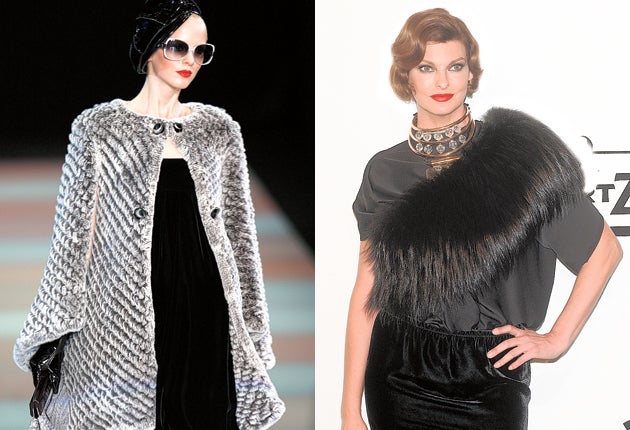Faux-fur designers bring the real thing in from the cold
Fake stuff is so popular it's raised demand for genuine fur too.

Your support helps us to tell the story
From reproductive rights to climate change to Big Tech, The Independent is on the ground when the story is developing. Whether it's investigating the financials of Elon Musk's pro-Trump PAC or producing our latest documentary, 'The A Word', which shines a light on the American women fighting for reproductive rights, we know how important it is to parse out the facts from the messaging.
At such a critical moment in US history, we need reporters on the ground. Your donation allows us to keep sending journalists to speak to both sides of the story.
The Independent is trusted by Americans across the entire political spectrum. And unlike many other quality news outlets, we choose not to lock Americans out of our reporting and analysis with paywalls. We believe quality journalism should be available to everyone, paid for by those who can afford it.
Your support makes all the difference.It has long epitomised fashion with a conscience, the ethical alternative to that mink coat your grandma left in her will. But faux fur risks losing the moral high ground as experts worry that its popularity is driving demand for the real thing, which has emerged as one of this winter's hottest trends.
Real fur dominated the autumn/winter catwalk collections on everything from shoes to coats to necklaces. London led the charge, with fur in some guise appearing on 48 per cent more pieces than the previous season, according to the International Fur Trade Federation, which promotes the use of animal skins.
And it isn't just catwalk models who have been wearing pelts. The actress Sienna Miller was snapped in a tweed and red suede fur-trimmed coat last week, just days after Kate Moss pulled on a multi-coloured wild fur coat for a night out at London's Dorchester Hotel. Garments with real fur have even made their way into high street boutiques, according to the British Fur Trade Association's Andrea Martin.
The astonishing rehabilitation of real fur, which Moss herself used to campaign against, has mirrored a surge in popularity for its ethical alternative. Faux furs, which can be hard to distinguish from the real thing, have won over some of fashion's biggest names, including Karl Lagerfeld and Giorgio Armani. Lagerfeld told November's Harper's Bazaar: "The material is beautiful and new in a way, because it was not that perfect before. It looked OK, but it felt stiff and harsh. Now the technology has advanced so much that you can hardly tell fake fur from the real thing."
But those technological advances have not only given fake fur a "new lease of life", they have also helped to change attitudes to real fur, according to Sue Evans, senior editor at the fashion analysts WGSN. "The fact that people are very accepting of vintage fur as an alternative to new fur has also helped. Plus icons like Kate Moss and Victoria Beckham are photographed wearing real fur, and celebrity culture is a big factor in helping to formulate Jo Public's fashion style," she said.
Frances Corner, head of the London College of Fashion, said: "Without doubt there's been a cultural shift in the UK. Fake fur is stimulating demand ... it makes [wearing fur] culturally acceptable."
The campaign group People for the Ethical Treatment of Animals is as opposed as ever to real fur: "Its presence on the catwalk doesn't reflect what people wear on the street. For the public, especially the young, fur is about as popular as a cold sore."
Join our commenting forum
Join thought-provoking conversations, follow other Independent readers and see their replies
Comments